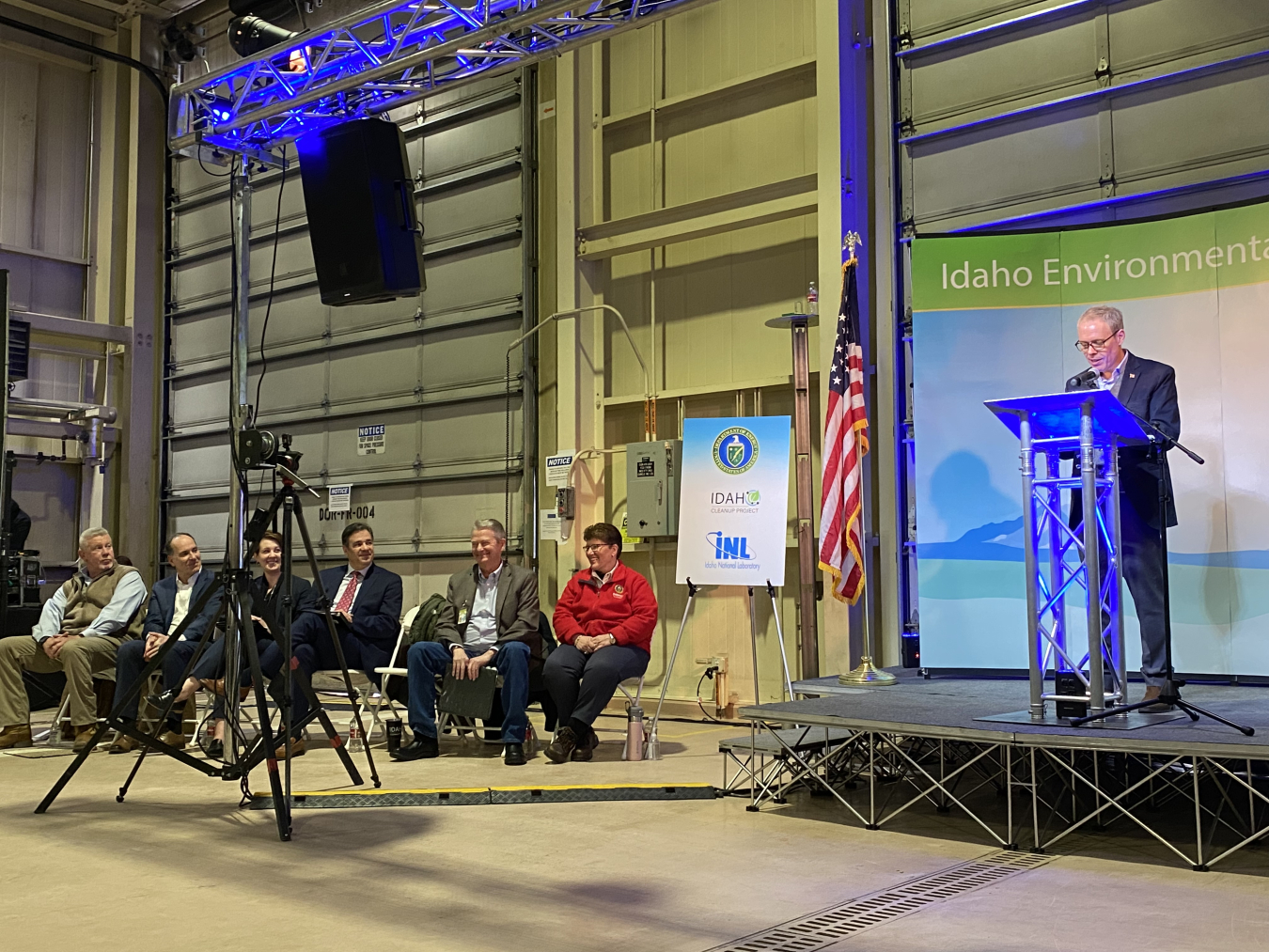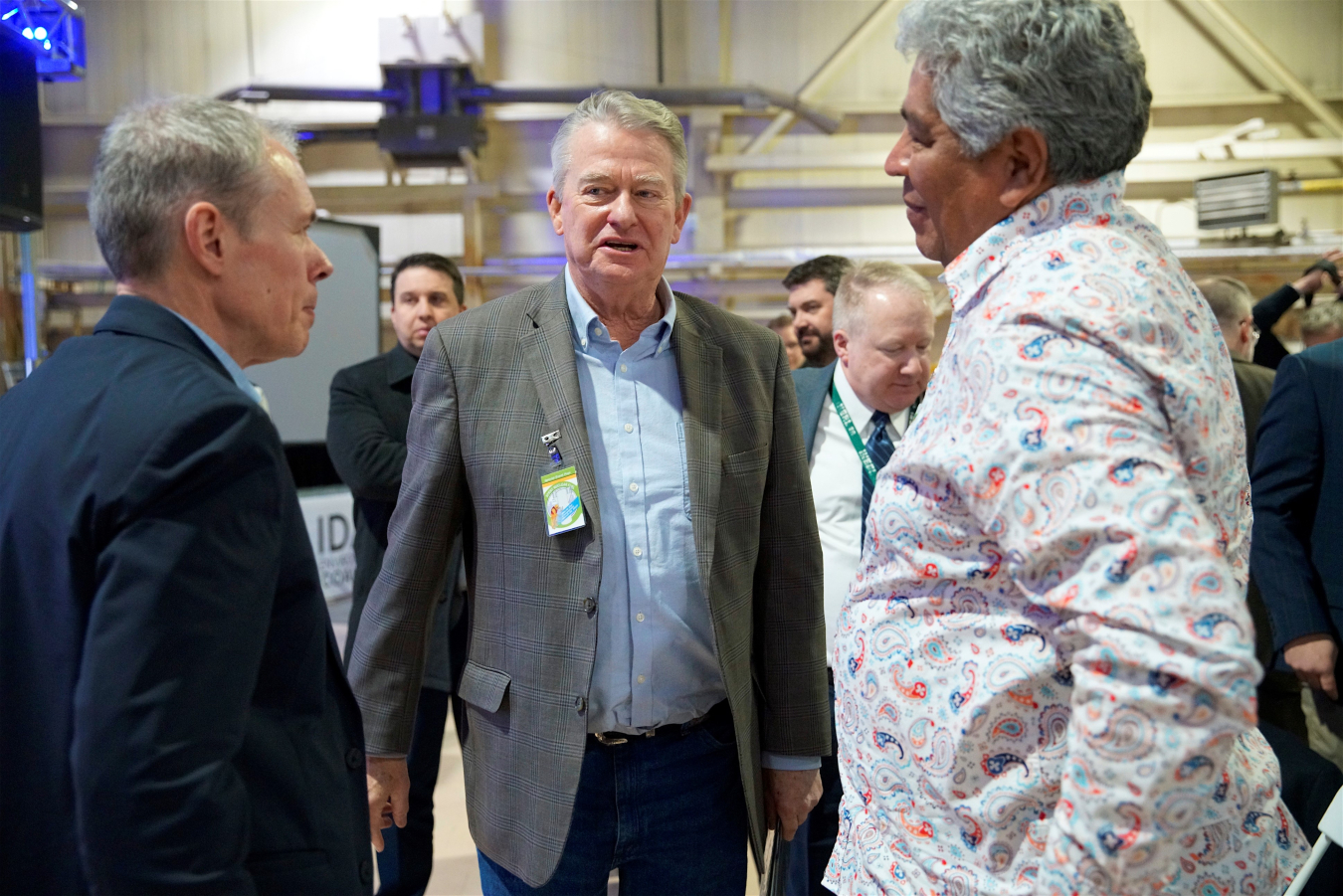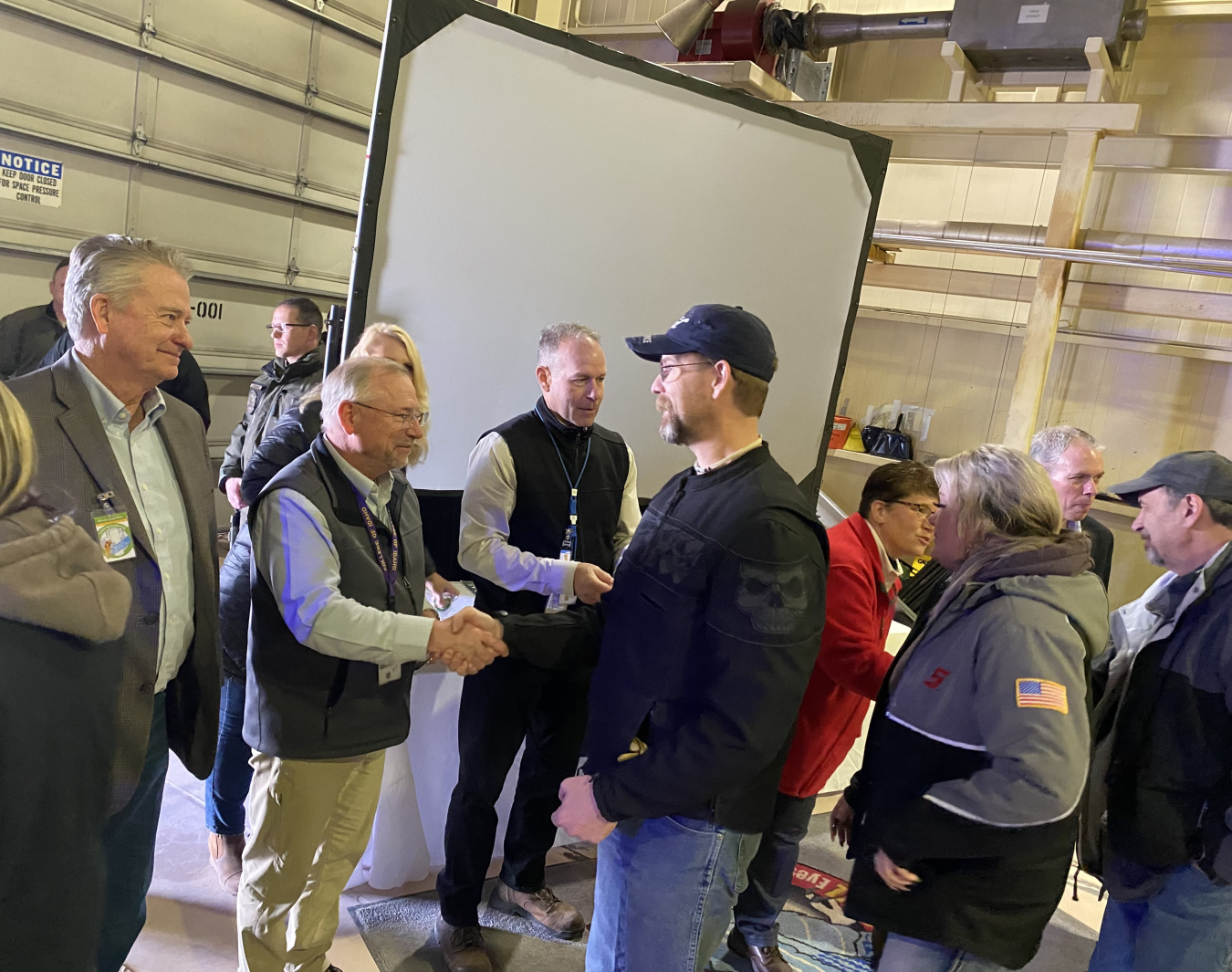U.S. Department of Energy (DOE) leaders on Tuesday joined tribal, state and local officials, contractors and a dedicated workforce here to mark a recent milestone with the state of Idaho nearly 25 years in the making.
Office of Environmental Management
March 29, 2023
EM Senior Advisor William “Ike” White addresses an audience of about 500 attendees at the Idaho Nuclear Technology and Engineering Center at the Idaho National Laboratory Site.
IDAHO FALLS, Idaho – U.S. Department of Energy (DOE) leaders on Tuesday joined tribal, state and local officials, contractors and a dedicated workforce here to mark a recent milestone with the state of Idaho nearly 25 years in the making.
DOE Office of Environmental Management (EM) Senior Advisor William “Ike” White, along with leaders from the DOE Office on Nuclear Energy (NE) and Naval Reactors, visited the Idaho National Laboratory (INL) Site to thank spent nuclear fuel handlers, operations personnel, engineers, radiological protection employees and team members from other organizations who safely completed the spent nuclear fuel wet-to-dry project more than nine months ahead of a 1995 Idaho Settlement Agreement milestone. Transfers of thousands of spent nuclear fuel elements began in the late 1990s and were completed this month.
“I greatly appreciate the collaboration within DOE and thank the Idaho National Laboratory and the Naval Reactors team for their efforts and resources that made achieving this milestone possible,” said White. “We will work together to meet future milestones.”
Idaho Gov. Brad Little, Idaho Attorney General Raúl Labrador, Idaho Cleanup Project Manager Connie Flohr, Idaho Environmental Coalition President (IEC) Ty Blackford, INL Director John Wagner, NE Assistant Secretary Katy Huff, Naval Reactors Representative Gil Pratt, congressional staffers and other dignitaries also expressed their appreciation to the workforce for completing the transfer of fuel from wet to dry storage.

“To the people who did the work: Thank you for your dedication, expertise and professionalism,” White said. “Thank you for being accountable to American taxpayers. And most importantly, thank you for protecting the environment.”
Little said the cleanup is a success story not only to INL but also to the entire DOE complex.
“This lab and its people that work here enrich the lives and livelihood across the state,” he said.
Labrador added, “I’m excited for you, and I congratulate you for your efforts and for the work that you do for Idaho and the people of the United States.”
Addressing the audience of about 500 attendees, Huff said, “All of you in this room, outside this room and across this complex have helped the Department of Energy complete this tremendous milestone nine months early. That is something I never get to say. You have made this possible.”

Flohr expressed her appreciation to the employees who supported the spent nuclear fuel wet-to-dry project.
“I am honored to be among you and to share in this achievement. Please accept my heartfelt gratitude,” she said. “I look forward to celebrating future accomplishments together as we fulfill our environmental stewardships to this great land."
Blackford also thanked IEC employees.
“This was not an 8-to-5 job,” he said. “This was 24 hours a day, seven days a week, 365 days a year. Thank you for your dedication to the mission.”
Spent nuclear fuel is a term used to describe uranium or plutonium metallic fuel that was used in a nuclear reactor until the fuel is no longer able to sustain a nuclear chain reaction, or fission.
For decades, the INL Site stored thousands of spent nuclear fuel assemblies from government and commercially owned reactors in water-filled basins and cement-lined internal canals at specific locations across the 890-square-mile INL Site for cooling and radiation shielding.
Initially, most of the fuel was slated for reprocessing at the Idaho Nuclear Technology and Engineering Center (INTEC) to recover unused uranium, but a U.S. policy change in 1992 ended reprocessing across the DOE complex.
Transfers of spent nuclear fuel from wet to dry storage were originally called for by the state of Idaho due to the potential threat to the underlying Snake River Plain Aquifer, which at the north end of the INL Site flows 220 feet below the ground surface to more than 1,000 feet below surface at the southern boundary.
The last of the fuel removed from a basin at INTEC was from the historic Experimental Breeder Reactor-II, which operated from 1964 to 1994 at the Materials and Fuels Complex. At one time, the reactor provided power across the INL Site.
Although fuel will no longer be stored, the water-filled basin will be kept open until IEC completes disposition of other fuel components. Once that work is complete, EM is expected to decide the future use of the facility.
Click here to learn more about the Idaho Cleanup Project.
To receive the latest news and updates about the Office of Environmental Management, submit your e-mail address.

